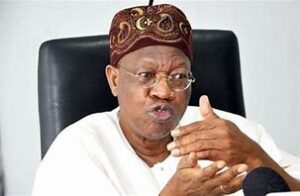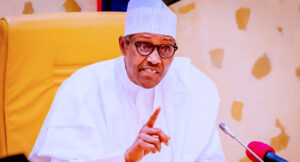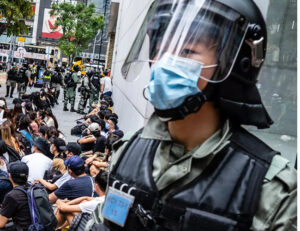The new electoral act as amended, 2022, has handed an unprecedented opportunity for voting revolution at the fourth coming general elections, February, and March respectively, with the rise in active or passive participation of young people now, influenced by the public drive for sociopolitical inclusiveness and a desired nationhood informed by the electoral reform. The rising interest of young people in recent months is a highly welcomed development, having been driven by several factors, including increased access to digital information through open source technology, a growing sense of civic engagement, as result of ineffective governance, and a desire to effect change-by-exchange for national survival and collective responsibility.
One major drivers of this electoral revolution is the new electoral act, the BVAS voting technology and the power of the PVC, or Permanent Voter’s Card, which is the only active weapon at the election ballot. This card, issued by the Independent National Electoral Commission (INEC) in Nigeria, serves as a form of identification for voters, allows them to participate in the elections and cast their vote in person.
Now with PVC, and BVAS, young people who constitute over 50% of the registered voters, can vote and have their voices heard in the political space, ensuring their choice invokes a fair representation of their aspirations and rights to influence the actions government in power.
With the effective use of social media handles and other digital platforms to mobilize and organize themselves, making it easier for collective action in the electoral process, there advocacy grows more stronger throughout the political spectrum, which now has led to an increase in voter registration among young people, and eventually would inspire greater turnout of all the young, registered voters.
Following the level of awareness and understanding of political issues among the general population, the emerging electoral revolution is a positive development for Nigeria and its future democratic institutions, as it leads to a more inclusive and representative government that reflects the views and aspirations of all citizens, including the young generation.
BEHAVIOR OF YOUNG VOTERS FROM 1999-2019
Young voters in Nigeria have been an important demographic in elections since the return to democratic civil rule in 1999.
At the 1999 presidential election, young voter turnout was relatively low, with many young people feeling disillusioned with the political process and disenchanted with the candidates. However, in subsequent elections, there has been a significant increase in young voters’ turnout, this demographic voters in Nigeria, are defined as those aged 18- 35, an active, with a significant impact on elections in the country since 1999. Though at the 1999 presidential election, young voters played little role in the election outcome and that of president-elect Chief. Olusegun Obasanjo, as the period saw a radical historic opportunity for the country and its civil society struggle to dismantle militocracy and or military dictatorship rule, and transform to a democratic and civilian government, with an overwhelming majority of the population ready for the transition. But in subsequent elections, from 2007-to-date, young people have in different ways intensified their political activism, by engaging and supporting, party politics and candidates who promise to address issues such as unemployment, corruption, poverty, quality education, gender balance, good health, and good governance. However, their voter turnout rate has remained relatively low, with many citing lack of trust in the electoral process and the internal party politics, the level of nepotism by those in power at both federal and sub-national levels, masses neglect, as some of the reason for not participating as they assumed that their efforts and votes cast are not going to be counted or relevant for elections outcome. In recent years INEC and few civil society organisations in the country have been making huge efforts to increase civic and voter education among young people in various ethnic languages to improve voter turnout and engagement, while reassuring them that their efforts and votes would count if they remained active.
In the 2003 and 2007 presidential elections, young people began to play a more active role in the political process, with many becoming more engaged in voter education and mobilization efforts. This trend continued in the 2011 and 2015 elections, with youth voter turnout reaching an all-time high.
In the 2019 presidential election, youth voter turnout was again high, with many young people becoming more politically active and engaged. However, there have been reports of voter intimidation and manipulation, which has led to concerns about the integrity of the electoral process. Despite these challenges, many young people remain committed to participating in the political process and shaping the future of Nigeria.
It is generally believed that young people in Nigeria have been increasingly politically active and engaged in recent years. This is partly due to the rise of social media and the internet, which has made it easier for young people to access information about politics and to organize around political issues. Additionally, there has been a growing sense among young people in Nigeria that they have been left behind by the country’s political and economic elite, and that they need to take action to demand greater representation and accountability from those in power. As a result, there has been an increase in youth-led political movements and campaigns, as well as in voter turnout among young people in Nigeria.
WHAT HAS CHANGED?
In recent years, there has been a shift in the behavior of young voters in Nigeria. Here are a few ways in which this has manifested:
• Increased participation: young voters in Nigeria have become more politically engaged and are participating in elections in larger numbers than in the past. This is partly due to the efforts of youth-led organizations and movements that are encouraging and educating young people on the importance of voting.
• Greater awareness: young voters are more aware of the issues and policies that affect them and are more likely to vote for candidates and parties that align with their beliefs and values. They are also more likely to demand accountability from elected officials and to hold them to account.
• Greater diversity of views: Young voters in Nigeria are more diverse than in the past, with different groups and communities coming together to form coalitions and movements that reflect their shared concerns and values. This has led to a more dynamic and diverse political landscape, as different groups are able to have their voices heard and to influence the political agenda.
• Greater use of technology: young voters are also using technology to stay informed and to mobilize support. Social media platforms like Twitter, Facebook, Instagram, and WhatsApp are being used to share information, engage in debates, and mobilize voters. This has made it easier for young people to stay informed, connect with like-minded people, and participate in political activities.
Overall, the behavior of young voters in Nigeria has changed in recent years, with more young people becoming politically engaged, aware, and active. They are more likely to participate in elections and to demand accountability from elected officials. They are also more diverse and more likely to use technology to stay informed and to mobilize support.
THE ENDSARS PROTEST AND THE NIGERIAN YOUTHS POLITICAL AWAKENING.
The EndSars protest, which began in October 2020, was a widespread movement of young Nigerians who were outraged and demanding an end to police brutality and corruption in the country. The protest was sparked by a video that went viral on social media, showing police officers from the Special Anti-Robbery Squad (SARS) brutally beating and extorting a young man, the video clip opened the hidden atrocities and dehumanizing acts of the police on ordinary innocent citizens, in the name of protecting the public. With this singular act, a people’s movement quickly grew and spread to cities across Nigeria, with young people at the forefront of the protests.
The EndSars protest was significant in that it brought a new level of civil and public awareness and engagement among Nigerian youths, thereby creating an atmosphere of solidarity and revolution for exchange, civility for brutality, community cohesion for ethnic division. The social movement was led by young people who were fed up with the lack of accountability and transparency in the government of the day and the high levels of corruption and abuse of power by the police forces. The protest also highlighted the importance of representation and the need for young people to be more politically active and engaged.
The EndSars protest also led to the formation of new socio-political groups and movements, such as the Nigerian Youth for Positive Change (NYPC), which is focused on promoting youth participation in politics and advocating for good governance. Additionally, the protest also led to the creation of new political parties, such as the Nigerian Youth Democratic Party (NYDP), which is focused on the welfare and empowerment of young people.
Overall, the EndSars protest was a significant event in Nigerian civic life and politics, as it marked a new level of public and political awareness and engagement among young people. The protest highlighted the importance of representation and the need for young people to be more politically active and engaged, which has led to the formation of new political groups and movements that are focused on promoting youth participation in and positive inclusiveness in politics for the advancement of a people’s government and good governance.
The protest played a role in increasing political engagement and awareness among young people, which was a highly visible and widely covered event bringing attention to issues of police brutality and corruption in Nigeria. Thus, what tends to be a positive social revolution of the people, was eventually high jacked by political elements, who turned the youths against themselves, for political reasons, the inspired movements was not able to activate electoral forces, during the LGA elections afterwards in Lagos, none did the motivation prove its significant at the Anambra, Ekiti and Osun elections in 2022, which still saw the traditional election outcomes, rural voters against urban voters.
it is obvious that the EndSars protest has specifically impacted the thinking of young people towards political activism and electioneering, but it has not effectively change young voter behavior towards voters participation, but with the increasing political awareness and engagement among this demographic across board in the past few months, leading to over 20m newly registered young voters, one would imagine a dramatic increase and new wave of democratic change, with the voters turnout and votes cast.
SIGNIFICANT DIFFERENCE BETWEEN 2015, 2019 AND NOW IN VIEW OF VOTERS REGISTRATION, PVC COLLECTED AND VOTING DEMOGRAPHICS AND PATTERNS.
In 2015, voter registration and PVC collection were not as widespread or efficient as they are now. The process was often hindered by logistical challenges, such as a lack of access to registration centers and inadequate resources. Additionally, voter demographics and patterns were not as diverse as they are now, with a majority of registered voters being older adults.
In 2019, voter registration and PVC collection became more efficient, with the Independent National Electoral Commission (INEC) implementing a Continuous Voter Registration (CVR) process that allowed for more flexible registration periods and easier access to registration centers. Additionally, voter demographics and patterns began to shift, with a larger number of young people and women becoming registered voters.
Now, in 2021, voter registration and PVC collection have continued to improve, with INEC implementing measures such as online registration and mobile registration centers to make the process more accessible and efficient. Additionally, voter demographics and patterns have become even more diverse, with many young people and women participating in the process. This is evident in the number of people who were able to register during the process and those who were able to collect their PVCs.
Overall, there has been a significant improvement in voter registration, PVC collection and voting demographics and patterns between 2015 and now. The process has become more efficient and accessible, and voter demographics and patterns have become more diverse. This shows that there is an increasing willingness among young people and women to actively participate in the electoral process and have their voices heard.
WILL THE INCREASE OF YOUNG, REGISTERED VOTERS MAKE ANY DIFFERENCE, IN COMPARISON TO TRADITIONAL VOTING PATTERNS?
The increase of young, registered voters may potentially make a difference in comparison to traditional voting patterns, but it is important to note that voter behavior is influenced by a variety of factors and is not solely determined by age, gender, ethnicity and or employability, but probably by, party patronage and money.
One potential difference that the increase of young, registered voters may bring is a shift in political priorities and issues that are important to voters. Young people may prioritize issues such as education, and job opportunities, which may be different from traditional voting patterns that prioritize other issues such as security, money and infrastructure promises.
Additionally, the increase of young, registered voters may also bring a change in voting behavior., they may be more likely to vote for candidates who align with their values and priorities, and less likely to vote for candidates who do not share their beliefs. This could potentially lead to a change in the political landscape, with a younger candidate with inspiring ideas, strong leadership and the political-will to govern being elected into office come February 25th. 2023
However, it’s important to note that voter behavior is influenced by a variety of factors, such as socio- economic status, religion, and ethnicity, among others, which can also shape their political preferences and voting patterns. Therefore, while the increase of young, registered voters may bring some changes, it is not a guarantee that it will significantly change traditional voting patterns, because this traditional voting pattern is highly imbedded in the fabrics of Nigeria rural voters’ culture, be it young or older voters.
Overall, the increase of young, registered voters may bring potential changes in political priorities, issues, and voting behavior, but it is important to consider that voter behavior is influenced by two major factor, Money Vs Poverty. With an estimated 70% of the 95m registered voters leaving in the rural areas, with an average poverty ratio between 6-in every 10 persons, leaving below poverty level. Young men and women in most deprived and uneducated communities, under the commanding influence of their patron, would exchange Dear votes for anything to put food on his/her table for the day.
Even though many observers are of the opinion that this election in February would be keenly contested, and it’s apparent that the youth’s participation would influence the results in a dynamic way, it’s important to equally note, that same young people are unevenly represented across the key contending political parties, of APC, PDP and LP. So the contending factor here would be are the majority non-partisan young voters going to vote, along same traditional pattern for a particular candidate and party, or is it going to be a fire cracker between the 25m young voters and over 35m traditional voters, my prediction is that we’re going to see a slight increase in voters turnout, around 2/5m more than the previous election in 2019, which means we’re looking at around 35-40m voters turnout, with an estimated 35 million votes to be casted.




